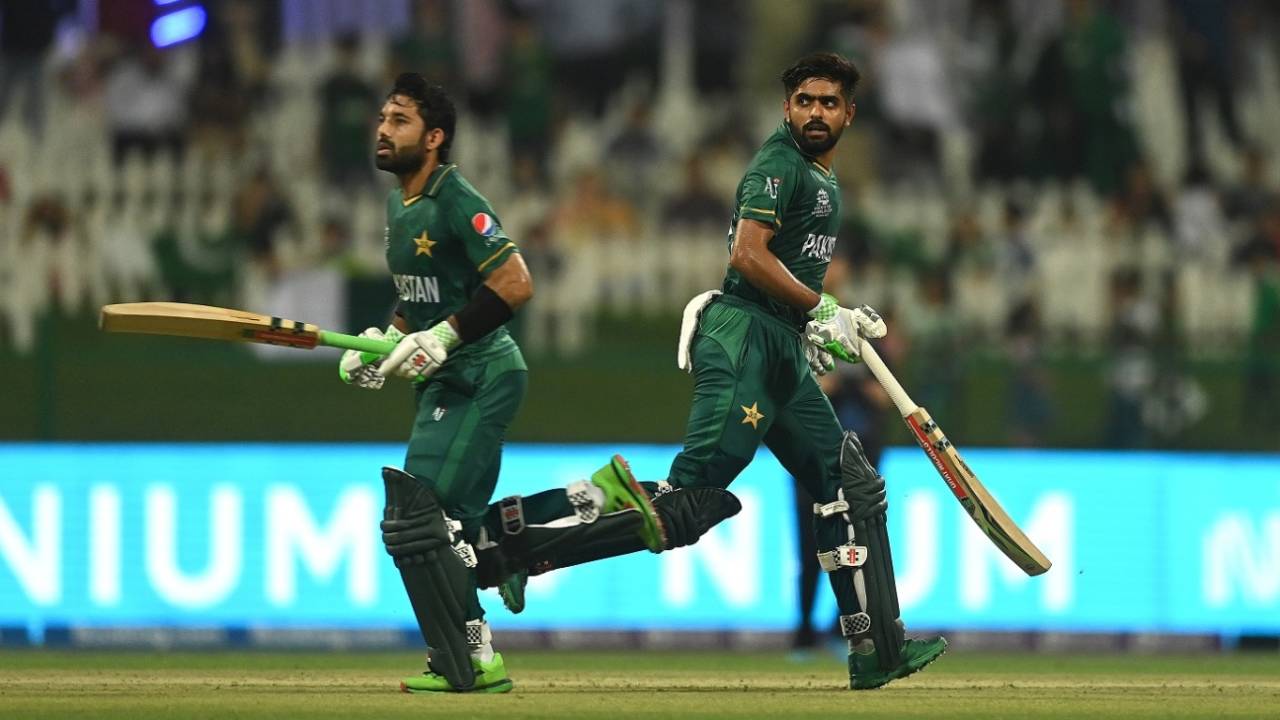Win toss, win match?
The chasing team has won 10 out of 11 matches in Dubai. The one game won by the team defending was a day game that featured Scotland and New Zealand.The pitch is expected to change drastically in the second half, so will the knockout be won at 5.30pm local time when the coin gets flipped? Or will a high-pressure game tilt the fortunes towards the team that bats first? Australia's only loss in the group stage came when they batted first at this venue against England. The key question is how the team batting first approaches their innings.
How Australia use their fifth bowler
Australia have won four in five. Their loss against England was the only game where the team played five specialist bowlers by replacing
Mitchell Marsh with Ashton Agar. After that, they were quick to revert to the seven-four combination that has worked well in the other games.
What this means is that four overs need to be shared by Marsh,
Glenn Maxwell and
Marcus Stoinis. While Maxwell has bowled eight overs at 6.50 runs per over, Marsh has bowled three overs and conceded just 16 runs. Maxwell has generally been used as a match-up against left-handed batters, but Pakistan's top six has just one of them.
Should Australia, therefore, sneak in a couple of overs of Maxwell in the powerplay when the Pakistan openers are trying to settle down or do they take the aggressive approach by bowling their quicks looking for wickets? If they go for the latter, then there is a good chance that Marsh might be the fifth bowler Australia use, given Pakistan's excellent record against spin. Australia do have multiple options, but the question is - which one do they opt for?
How can Australia tackle the Imad threat?
One bowler with a potential to play an important role for this contest is
Imad Wasim. Imad's economy of 5.23 is the best for a spinner in this World Cup. Imad may not pick up wickets, but he creates dot-ball pressure that forces batters to attack other bowlers, thereby creating more chances from the other end.
The opening duo of David Warner and Aaron Finch has an interesting conundrum to deal with once they get through the first over of Shaheen Shah Afridi without losing a wicket. While Warner has scored 38 runs from 19 balls against Imad (albeit in different conditions), his partner Finch has struggled, scoring just eight runs from 13 balls while being dismissed twice. Finch also struggled against Akeal Hosein, who, in principle, is a bowler of the Imad mould. Therefore, Australia may be better off with Warner facing most of Imad's balls.
Another stat that tilts the match-up in Warner's favour is Imad's record against left-hand and right-hand batters. In the last two years, Imad has conceded seven per over against left-hand batters compared to the 5.84 against right-hand batters. Although the difference is not huge, any little advantage could make a big difference in the shortest format. Australia's right-hand middle-order batters could have their task cut out against both Imad and Shadab Khan. An off-field choice would be in promoting Matthew Wade up the order. But Maxwell's switch-hits could do the same thing.
Pakistan's "Powerplay"
It wouldn't be unfair to call Pakistan the competition's best team so far. It's hard to find weaknesses in their campaign. They've won thrice chasing and twice defending. Bowlers and batters seem to know their roles. However, one important facet of the game seems a mystery, more so, considering their batting depth.Their powerplay approach, of starting slowly, has helped the team have the best powerplay average (87.5), but also the lowest run rate (5.83) in the first six overs. In this style of play, Babar Azam and Mohammad Rizwan usually set up a platform and ensure one of them bat through the innings. And although this setup has allowed Pakistan to score heavily at the death - with wickets in hand - at 14.58 runs, it may cause an issue against a bowling attack that isn't Namibia or Scotland.
The question therefore is: will Pakistan's openers change their powerplay approach by having one of Babar or Rizwan become the attacker? Or should they play the same way, knowing very well that this late-attack approach may backfire against a well-rounded attack like Australia? Given how dominant Babar and Rizwan have been, the Australia quicks would be hunting for the early wickets to push Pakistan to "Plan B." How Pakistan approach their batting powerplay could go a long way in deciding Australia's fate in Dubai.



